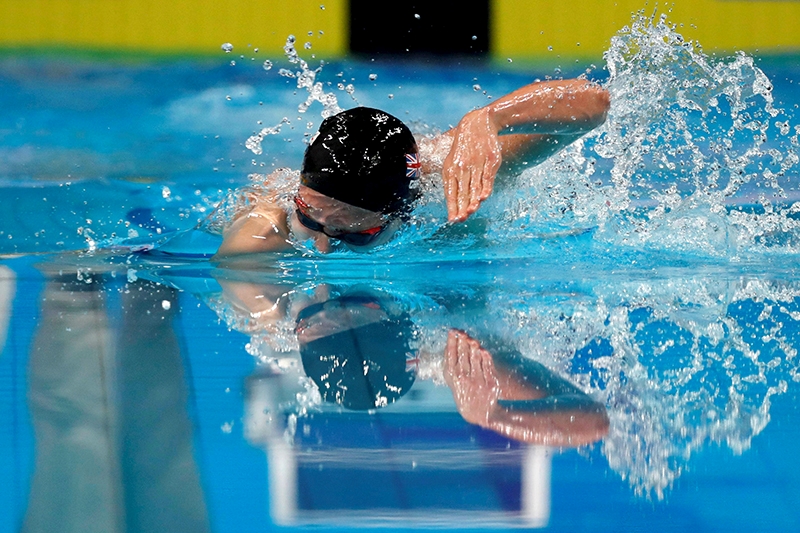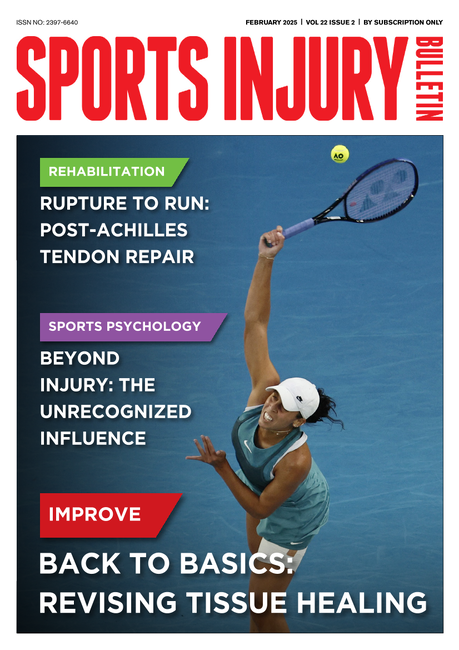You are viewing 1 of your 1 free articles. For unlimited access take a risk-free trial
Swimming fast: a hands-on approach to a stronger stroke
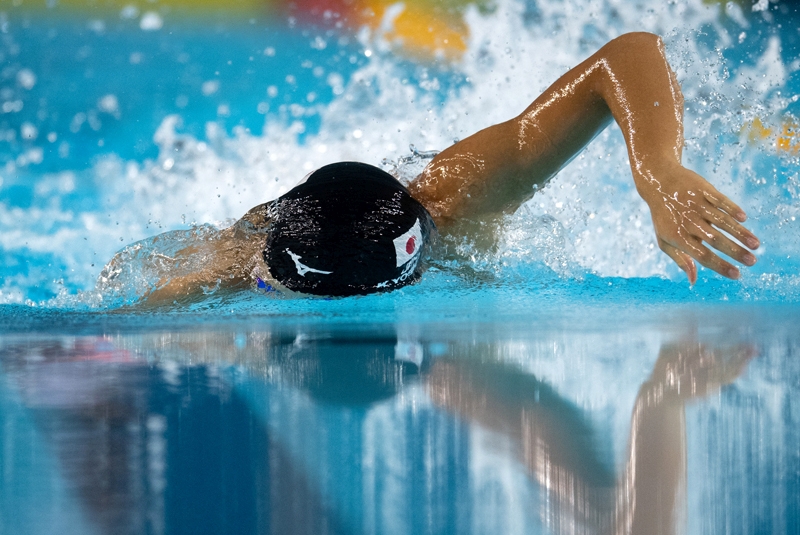
Fifteen years ago, I had the pleasure of interviewing David Costill, a legendary professor of exercise science. I was researching an article about the effects of aging on sports performance, and thought we were going to talk mostly about science. But Costill was an athlete: a collegiate swimmer from the 1950s who, 25 years later, had returned to masters competition. Up until age 62 Costill could still match his collegiate times at distances between 50 yards and 200 meters. And even at 65, he thought he could still hold his collegiate pace at 400 meters.
What was fascinating was that Costill explained his apparent fountain of youth had little to do with defying the physiology of aging (which slows the average 65-year-old by about 23 percent). What had kept him fast were changes in training. In part, he’d simply learned to train more effectively. But he’d also studied what the new generation of elites were doing, taking tips from them to let his technique keep pace with the latest theories. Indeed, for a while, in his upper 40s and 50s, his performances hadn’t just held their own from his college days - they significantly improved!
Swimming and technique
Costill isn’t the only swimmer to find big improvements from developing technique changes. When Costill was in college, the 400m freestyle world record was 4:25.9. Sixty years later, it’s 3:40.07 – a 17% improvement! In comparison, the world record for the mile run - a race that takes about the same length of time - has fallen by only from 3:54.5 to 3:43.13 – around 4% (see figure 1). It’s dramatic proof that, as triathletes and other competitors who’ve tried both swimming and running know, swimming is a sport that strongly rewards careful attention to technique. Even seemingly minor innovations in technique can pay BIG dividends.Figure 1: 400-meter swimming and 1-mile running record progression
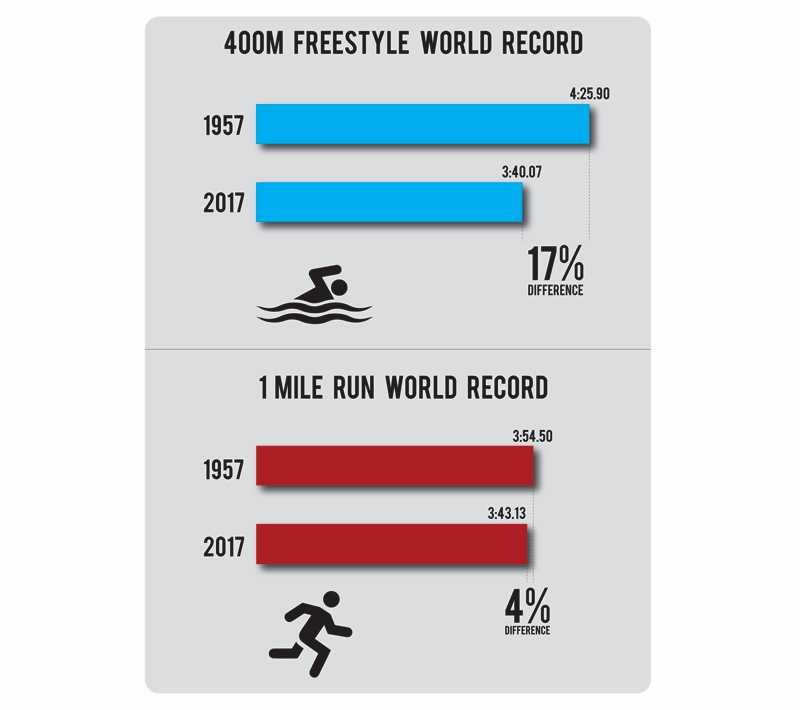
Spreading hands
Optimising swimming technique requires the correct coordination of a large number of movements. The action of the hand and arm movement through the water has unsurprisingly received a great deal of attention, as this is the action that generates the main propulsive force through the water.Hitherto, one aspect of hand/arm technique that nearly all exercise physiologists, coaches and swimmers have agreed on is that a ‘cupped hand’ with closed fingers is optimum for developing maximum force during the propulsive phase of the stroke. Recently however, some exercise researchers have proposed a counterintuitive technique, claiming that it can make swimmers considerably more powerful in the water. And when you look at the underlying science, it might not be as crazy as it sounds.
The recent research comes from Dutch scientists at the Eindhoven University of Technology and Delft University of Technology. It was presented last November at a meeting of the American Physical Society’s Division of Fluid Dynamics, in Portland, Oregon, by Josje Van Houwelingen, a researcher (and swimmer) at Eindhoven(1).
At issue is the question of how you should hold your fingers when swimming. And though it seems a fine point of detail, it appears that finger position can make a big difference in how well you perform in the water. Many swimmers have been coached to swim with closed fingers, or even with cupped hands. But that, quite simply, is wrong (see panel below).
Panel: The power in your hand
In a series of lab experiments, Van Houwelingen and her colleagues used a 3D printer to create model hands, with fingers ranging from tightly pressed together to widely splayed. They then put these hand models in a wind tunnel and measured the drag created by the various hand positions (see box 1)Normally, swimmers think of drag as bad, because it’s the force that holds you back. But it’s actually a two-edged sword. Yes, you want to be as streamlined as possible as you move forward, but during your stroke, you need drag on your hands and arms, because that’s what you push against. If it didn’t exist, you’d just flop around without ever going anywhere.Wind tunnels were chosen because they are easier environments to work in than water and they also eliminate the complicating effect of surface waves, which can distort results. One the wind-tunnel research was completed, the researchers used fluid dynamics equations to scale up the wind tunnel-drag coefficients to ones that would apply in a denser fluid - ie water. What they found was that any amount of finger spreading produces more drag than none, but that the drag was highest for moderate levels of spreading—about 10 degrees, or a little less than a centimeter between fingertips for the average hand (see figure 2)
Figure 2: Finger position and force generation
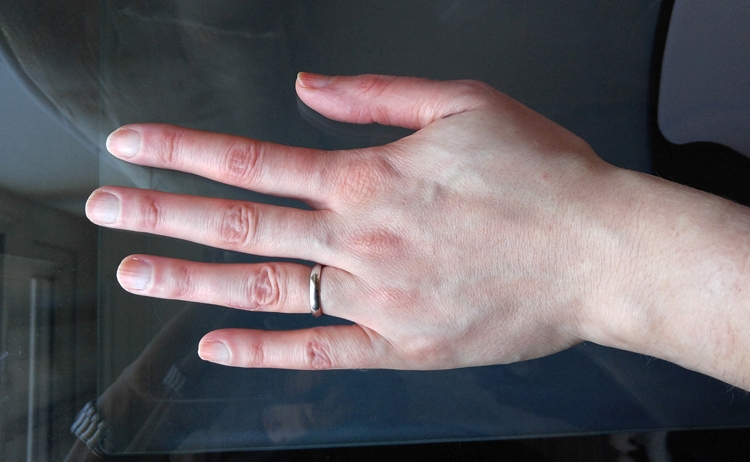
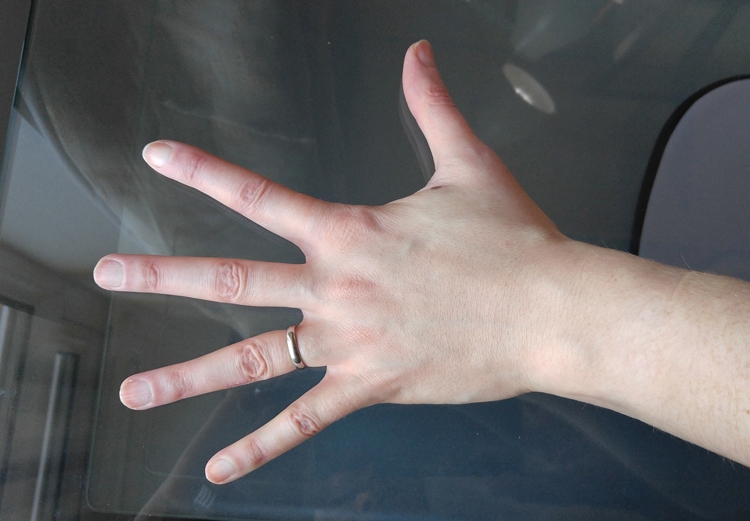
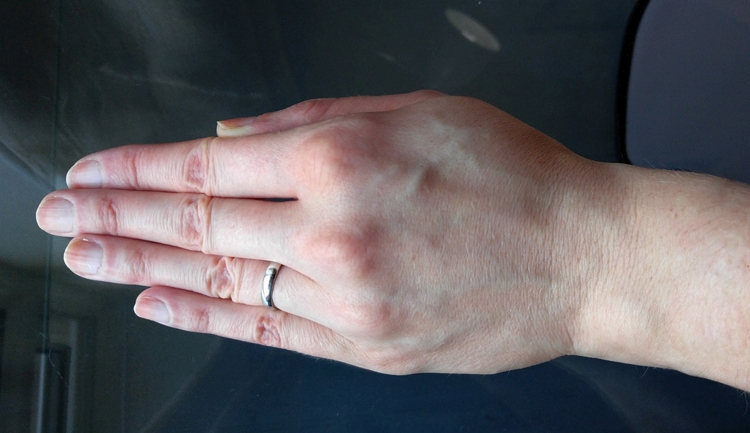
The cupped hand position (bottom) generated least drag - ie was least effective for force generation. The widely-splayed hand produced greater drag. However, maximum drag (and therefore force production potential) was with the slightly-splayed hand (top).
Vortexes and momentum
Van Houwelingen’s group’s work isn’t the only science to contradict old-school coaching wisdom about holding your fingers together to prevent water from escaping between them. As far back as 2006, Bodo Ungerechts of the University of Bielefeld, Germany, and J. Klauck of the German Sport University of Cologne, conducted a theoretical analysis on the same topic, publishing their results in the Portuguese Journal of Sports Sciences(2,3).They reported that part of how swimmers generate propulsion is by creating vortexes in the water that help to transfer forward momentum to the swimmer by pulling water backward. They noted that ‘slightly spread’ fingers during the stroke might contribute to this process, although they didn’t define what a ‘slight’ spread might entail.
In 2010, a Portuguese team of researchers led by Daniel Marinho of the University of Beira Interior helped clarify this more precisely with numerical simulations of the water resistance created by finger spreads of zero, 3.2 millimeters, and 6.4 millimeters(4). They concluded that 3.2 millimeters was best, with some variation based on the ‘attack angle’ of your hand vis-à-vis the water during the stroke. That’s slightly different than Van Houwelingen’s 10-degree spread. However, the bottom line of all three studies is similar: you get more drag, and therefore a stronger stroke, with the fingers slightly spread than with them either widely splayed or held close together.
Bigger paddle
If talk of drag coefficients, vortexes, and fluid dynamics is a bit overwhelming, the easiest way to think of it is by understanding that all of these studies show that at optimum spread, the fingers do indeed have gaps between them, but (very importantly) these gaps are small enough to prevent water from flowing freely through the fingers. Instead, there is a ‘turbulent flow’, which creates what Marinho’s study described as an added barrier against which the swimmer can pull. In effect, it’s like having larger hands - though if the spread is too large, the benefit is lost as water sieves between the overly spread fingers.Finishing orders
How big is the performance difference between having optimum finger spread and something else? Van Houwelingen’s group calculated the effect on the power of the swimmer’s stroke, and on how that power difference translates into swimming speed. They found a whopping five to eight percent improvement in drag for optimum finger spreading compared to no spread, which is enough to produce a significant improvement in performance with no change in the swimmer’s fitness. According to Van Houwelingen, ‘The force you can produce is unchanged, but what does change is the efficiency of those propulsive forces’.Converting that to swimming performance would translate to an improvement of 0.6 seconds at world-class pace in the 50-meter freestyle. To put that in perspective, the top six women’s positions in the 2016 Rio Olympics were decided by a mere 0.12 seconds (see figure 3). If any of the trailing five weren’t using an optimal finger spread, changing that alone could have moved them to the top.
Figure 3: Women’s 50m freestyle final results

Pernille Blume of Denmark (left) and Ranomi Kromowidjojo of the Netherlands compete in the Women's 50m Freestyle Final at the Rio 2016 Olympics. Blume's winning margin was just two hundreths of a second.

Theory into practice
Underwater photos of Michael Phelps and Ian Thorpe have shown that they both used strokes that entered the water with fingers fairly widely splayed. But by the end of their strokes, their fingers were either closed or much closer together. Were two of the world’s best swimmers losing concentration during their strokes, or were they onto yet another subtlety? Almost certainly the latter. Although some degree of finger spreading is probably best at most points in the stroke, studies have found that the ideal finger spread may change during the course of the stroke, as the direction of movement through the water changes.Monitoring all of this scientifically is difficult, but elite athletes ultimately fall back on one of the basic fundamentals of coaching and training, which is to understand and monitor and understand exactly how your body functions. It also pays to experiment Building on this, we can make some recommendations:
- If you’ve always been taught to keep your fingers together, or worse yet, to cup your hands, try spreading your fingers to rake through the water, as though trying to remove autumn leaves from your yard.
- If that feels too much, move your fingers closer together, as though combing tangles out of hair.
- When that starts to feel natural (when the start of your stroke starts to gain power and confidence), look to see if you need to vary your finger spread again as the stroke continues.
- Use timed laps over a fixed distance to assess what finger position works best, and at which point in the stroke.
- Remember, your ultimate goal isn’t to find the ideal finger spread under someone else’s scientific model, but to find the one that works best for you, as you are now.
Case study: Alan Webb

Alan Webb is the reigning American record-holder at the mile run. But before he specialised in track, he spent his freshman year of high school as a swimmer, coming close to qualifying for the US junior nationals in several events. Then, toward the end of his professional career, he retired from track to try his hand at the triathlon (from which he later retired after a bone-breaking bike crash ended his chances for the Olympics).
Alan’s coach was into physics, and well aware of the value of the value of finger spreading. As Alan explained, “The science I got was 5 millimeters between fingers.” But it’s easy to focus too strongly on the science. Instead, Webb believes, it’s all about of getting a ‘feel’ for the water—something that many runners making the transition to triathlon find difficult. “It takes time,” he says. “But when you get that feel, there can be sudden and extremely rapid improvements in the swimming part of the sport. Quoting Morpheus in the movie ‘The Matrix’, there’s a difference between knowing the path and walking it!”
References
- More efficient swimming by spreading your fingers. Willem van de Water, Josje van Houwelingen, Dennis Willemsen, Wim Paul Breugem, Jerry Westerweel, Rene Delfos, and Ernst Jan Grift, 69th Annual Meeting of the APS Division of Fluid Dynamics, Volume 61, Number 20, Abstract L19.00008.
- Portuguese Journal of Sport Sciences 2006, 6(Suppl. 2), 109–111
- Portuguese Journal of Sports Sciences 2006. International symposium on biomechanics and medicine in swimming: Consequences of unsteady flow effects for functional attribution of swimming strokes. Ungerechts, B. and Klauck, J.
- J Appl Biomech. 2010 Feb; 26(1):87-92
Newsletter Sign Up
Testimonials
Dr. Alexandra Fandetti-Robin, Back & Body Chiropractic
Elspeth Cowell MSCh DpodM SRCh HCPC reg
William Hunter, Nuffield Health
Newsletter Sign Up
Coaches Testimonials
Dr. Alexandra Fandetti-Robin, Back & Body Chiropractic
Elspeth Cowell MSCh DpodM SRCh HCPC reg
William Hunter, Nuffield Health
Keep up with latest sports science research and apply it to maximize performance
Today you have the chance to join a group of athletes, and sports coaches/trainers who all have something special in common...
They use the latest research to improve performance for themselves and their clients - both athletes and sports teams - with help from global specialists in the fields of sports science, sports medicine and sports psychology.
They do this by reading Sports Performance Bulletin, an easy-to-digest but serious-minded journal dedicated to high performance sports. SPB offers a wealth of information and insight into the latest research, in an easily-accessible and understood format, along with a wealth of practical recommendations.
*includes 3 coaching manuals
Get Inspired
All the latest techniques and approaches
Sports Performance Bulletin helps dedicated endurance athletes improve their performance. Sense-checking the latest sports science research, and sourcing evidence and case studies to support findings, Sports Performance Bulletin turns proven insights into easily digestible practical advice. Supporting athletes, coaches and professionals who wish to ensure their guidance and programmes are kept right up to date and based on credible science.
